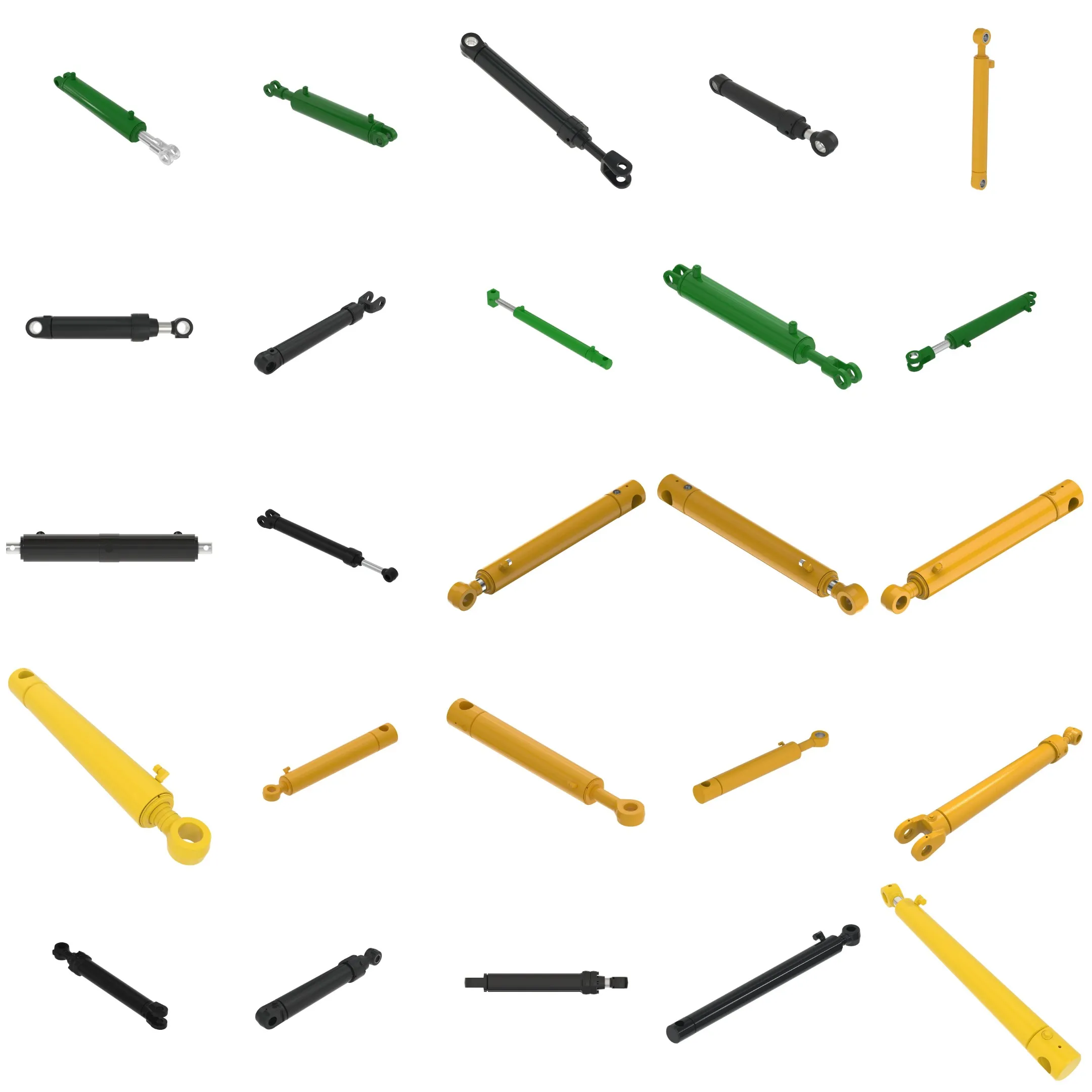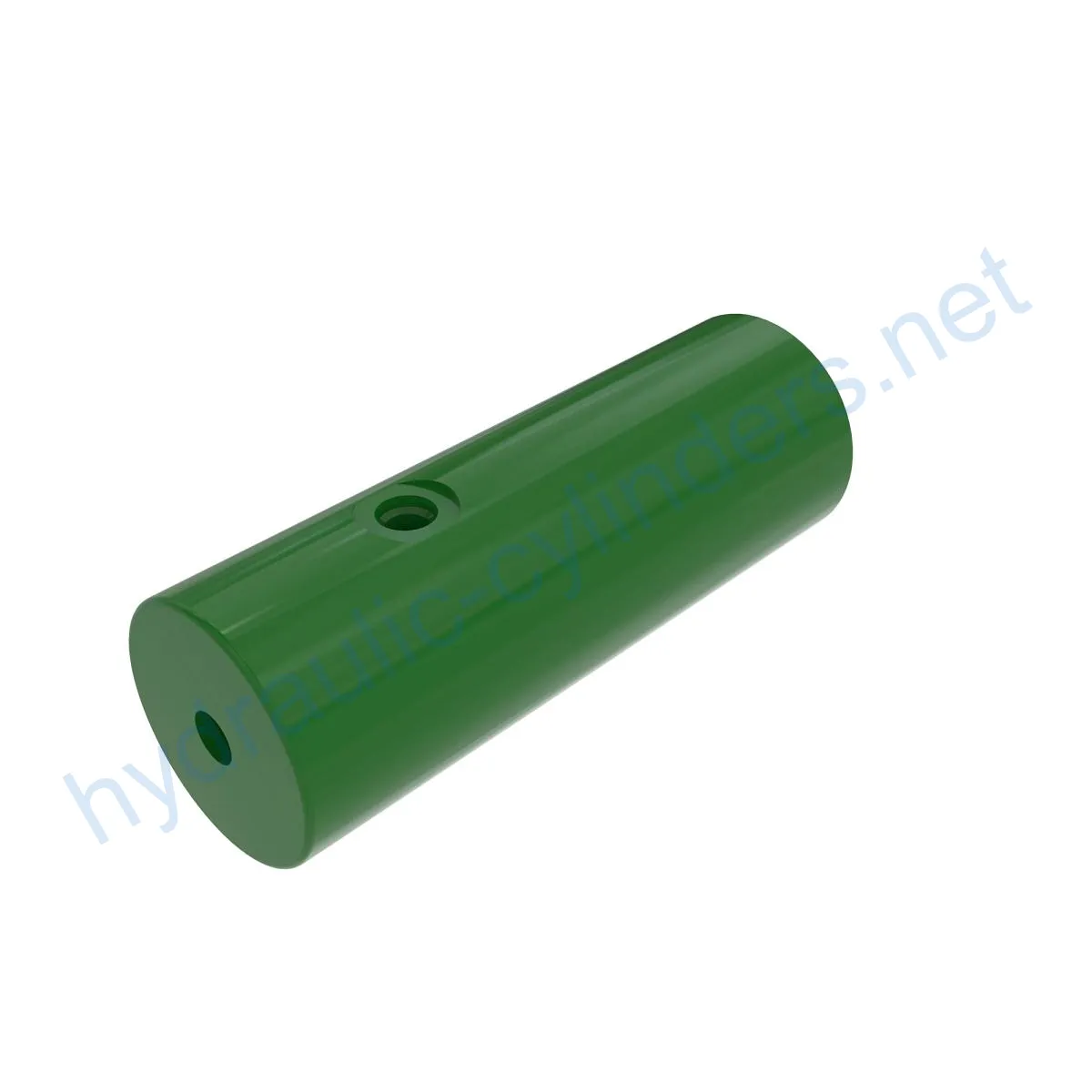Replacement Of CB11473552 Basecutter Height Indicator Hydraulic Cylinder
Hidrolik silindir üreticilerinden, tedarikçilerinden ve mekanik ürünlerin ihracatçılarından biri olarak, hidrolik silindirler ve diğer birçok ürünü sunuyoruz.
Ayrıntılar için lütfen bizimle iletişime geçin.
Posta:sales@hydraulic-cylinders.net
Hidrolik silindir üreticisi tedarikçisi ihracatçısı.
Replacement Of CB11473552 Basecutter Height Indicator Hydraulic Cylinder
This product is a hydraulic cylinder designed to replace the CB11473552 basecutter height indicator. The cylinder is an essential component that helps regulate the height of the basecutter in various machinery models such as 3510, 3520, and 3522. With a weight of 3.5 lb, a height of 2.4 in, and a length of 7.2 in, this cylinder offers reliable performance and durability.
Product Specifications
- Weight: 3.5 lb
- Height: 2.4 in
- Length: 7.2 in
Product Models
- 3510
- 3520
- 3522
Product Features
- Improved Equipment Performance: Replacing damaged or worn hydraulic cylinders can restore the normal operation of the equipment, ensuring its performance in various applications.
- Enhanced Safety: Regularly replacing hydraulic cylinders reduces the safety hazards caused by cylinder failures, ensuring the safety of operators and equipment.
- Overload Protection: New cylinder designs often incorporate better overload protection mechanisms, enhancing safety.
- Quick Installation: Modern hydraulic cylinders are designed for easy installation and replacement, minimizing downtime.
- Standardized Components: Many hydraulic cylinders are standardized products, making it easier to obtain replacement parts in the market.
We can produce this product and provide perfect replacements for these hydraulic cylinders.
Applications
The hydraulic cylinder finds applications in various scenarios:
- Excavators: Replacing hydraulic cylinders in the arms or buckets of excavators restores normal operation after long-term use or overload damage.
- Crane: Hydraulic cylinders in crane boom arms can wear out from frequent lifting and lowering, requiring regular replacement to ensure safety.
- Tractors: Hydraulic cylinders in front-end loaders of tractors may experience leaks or performance degradation during continuous lifting and tilting operations, necessitating replacement.
- Harvesters: The hydraulic system of harvesters operates under high pressure, and cylinders may get damaged due to fatigue, requiring timely replacement to maintain efficiency.
- Automated Production Lines: Hydraulic cylinders are used to control robotic arms and other automated equipment. Immediate replacement is necessary to prevent production efficiency issues in case of cylinder failures.
- Die-Casting Machines: In high-pressure and high-temperature environments, hydraulic cylinders may experience performance degradation. Regular replacements ensure product quality.
- Mining Equipment: Hydraulic cylinders are used for lifting and moving heavy loads in mining equipment. Due to harsh working conditions, regular inspections and replacements are necessary to avoid equipment failures.
- Bulldozers: Wear on hydraulic cylinders in bulldozer blade arms can lead to decreased pushing capacity, necessitating timely replacement to maintain operational efficiency.
Maintenance Tasks
Regular maintenance tasks for the hydraulic cylinder include:
- Periodic Inspection: Regularly inspect the cylinder for any signs of wear, leaks, or damage.
- Proper Lubrication: Ensure appropriate lubrication to reduce friction and ensure smooth operation.
- Seal Replacement and Calibration Check: Replace worn seals and check calibration to maintain optimal performance.
During the installation process, provide proper guidance for aligning the cylinder and recommend using suitable installation brackets to secure it. We offer recommended inspection, repair, and replacement procedures, as well as replacement parts and rebuilding services to extend the lifespan of the hydraulic cylinder.
Safety Considerations and Environmental Factors
When using hydraulic cylinders, safety measures are crucial. It is important to follow proper installation, lubrication, and adjustment procedures. Proper alignment guidance should be provided during the installation process. Regular inspection, maintenance, and seal replacements are essential to ensure the safety and longevity of the hydraulic cylinder. Environmental factors should also be considered to optimize performance and minimize any negative impact on the surroundings.
Troubleshooting and Common Issues
Common issues and troubleshooting for hydraulic cylinders include:
- Leakage: Inspect seals and connections for leaks. Replace any damaged seals and tighten or replace connections as necessary.
- Slow Cylinder Movement: Check for insufficient hydraulic fluid or blockages in the system. Refill or flush the system accordingly.
- Uneven or Jerky Cylinder Movement: Check for air trapped in the system. Bleed the system to remove air and ensure smooth operation.
- Excessive Noise or Vibration: Inspect mounting brackets and connections for any looseness or damage. Tighten or replace components as needed.
- Overheating: Check for inadequate lubrication or excessive pressure. Address these issues to prevent overheating.
For effective diagnosis and problem-solving, we provide troubleshooting tips, solutions, and preventive measures to minimize potential issues.

Product Design Considerations and Selection Criteria
When selecting a hydraulic cylinder, it is important to consider the following:
- Load-Bearing Capacity: Ensure the cylinder can handle the intended workload.
- Sealing: Opt for high-quality seals such as piston seals and rod seals made of wear-resistant materials like polyurethane or nitrile rubber.
- Durability: Choose cylinders with finely treated cylinder bodies and threaded end surfaces to enhance wear resistance.
- Safety: Select cylinders with reliable overload protection mechanisms.
- Maintainability: Consider the ease of maintenance, including seal replacement and lubrication requirements.
Proper sealing and lubrication are vital for the hydraulic cylinder’s performance. Various sealing components, such as piston seals and rod seals, should be used. These seals should be made of durable materials like polyurethane or nitrile rubber to withstand wear. The cylinder body and threaded end surfaces should undergo precise treatment to enhance wear resistance. Regular lubrication with appropriate hydraulic oil is necessary to ensure smooth operation and longevity.

Regular Inspection and Preventive Maintenance Measures
Proper maintenance measures for the hydraulic cylinder include:
- Regular inspection of seals, connections, and overall condition.
- Appropriate lubrication to minimize wear and ensure smooth operation.
- Seal replacement when necessary to maintain optimal performance.
- Calibration checks to ensure accurate height indication.
- Providing correct installation guidance to align the cylinder properly.
- Suggesting the use of appropriate installation brackets to secure the cylinder
Take a Tour of Our VR Factory:
Take a tour of our VR factory with the following
Hydraulic Cylinder Application:


